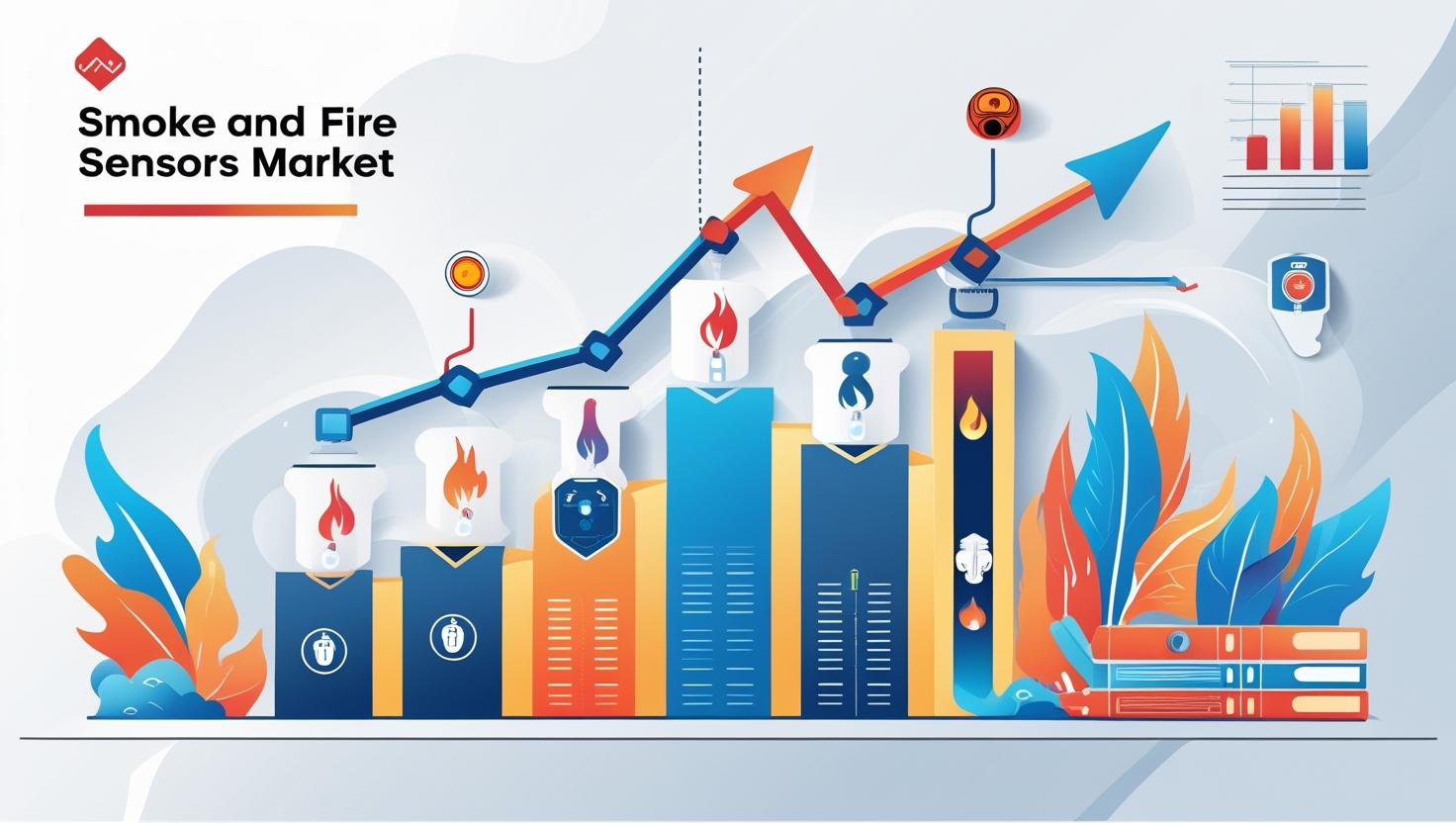The smoke and fire sensors market is witnessing significant momentum, driven largely by expanding industrial applications. As industries worldwide prioritize safety, regulatory compliance, and operational continuity, the adoption of advanced smoke and fire detection technologies is becoming an essential part of industrial infrastructure. This trend is fueling market growth and spurring innovation within the sensor technology landscape.
Industrial Safety: A Critical Driver
Industrial environments such as manufacturing plants, chemical refineries, oil and gas facilities, and warehouses present unique fire risks due to the presence of flammable materials, heavy machinery, and complex electrical systems. Early detection of smoke or fire in these settings is paramount to preventing catastrophic incidents, minimizing property damage, and protecting human lives.
Consequently, industries are increasingly investing in state-of-the-art smoke and fire sensors that offer fast and reliable detection. These sensors often incorporate multiple detection technologies—including optical, ionization, and laser-based systems—to identify smoke particles and heat signatures with high precision.
Integration with Industrial Automation and IoT
The rise of Industry 4.0 and the Industrial Internet of Things (IIoT) has transformed how fire and smoke detection systems are designed and deployed. Modern smoke and fire sensors are now commonly integrated with automated control systems, enabling real-time monitoring and immediate response protocols.
By linking sensors to centralized control rooms or cloud platforms, industrial operators can receive instant alerts and initiate safety measures remotely. This connectivity not only improves response times but also facilitates predictive maintenance, reducing downtime and operational costs.
Download PDF Brochure @ https://www.marketsandmarkets.com/pdfdownloadNew.asp?id=162940771

Regulatory and Compliance Pressures
Governments and regulatory bodies worldwide have tightened fire safety standards, particularly in high-risk industrial sectors. Compliance with these regulations mandates the installation of certified smoke and fire detection systems, creating a steady demand for advanced sensors.
For many industries, failure to comply can result in heavy penalties, legal liabilities, and reputational damage. This regulatory environment encourages companies to upgrade legacy detection systems and adopt innovative solutions that meet evolving safety standards.
Market Growth and Innovation
The global smoke detector industry is expected to grow from USD 2.68 billion in 2024 to USD 3.76 billion in 2029, with a CAGR of approximately 7.0% , The expanding industrial footprint in emerging economies, combined with the modernization of existing facilities in developed regions, presents lucrative opportunities for smoke and fire sensor manufacturers. Innovations such as multi-sensor detectors that combine smoke, heat, and gas sensing capabilities are gaining traction, offering more comprehensive hazard detection.
Additionally, wireless and battery-powered sensors simplify installation in complex industrial layouts where wiring is challenging. These features, coupled with advancements in sensor sensitivity and false alarm reduction, are driving higher adoption rates.
Sector-Specific Applications
Several industrial sectors stand out as key adopters of smoke and fire sensors:
-
Oil and Gas: Harsh environments and volatile substances necessitate highly reliable and explosion-proof sensors.
-
Manufacturing: Protecting machinery and inventory requires early detection and integration with facility management systems.
-
Chemical Processing: Complex chemical reactions demand precise monitoring to avoid hazardous incidents.
-
Warehousing and Logistics: Large spaces benefit from wireless sensor networks enabling flexible coverage.
Each sector’s unique requirements are influencing the development of tailored sensor solutions that address specific challenges.
Growth Opportunities in the Smoke and Fire Sensors Market
The smoke and fire sensors market is poised for robust expansion, fueled by increased demand across industrial sectors aiming to modernize their safety infrastructure. One of the most significant growth opportunities lies in the integration of sensors with smart industrial systems and the Industrial Internet of Things (IIoT). As more facilities move toward automation, there is a rising need for intelligent sensors that can provide real-time data, remote monitoring, and predictive maintenance. This opens doors for manufacturers to develop connected, low-power, and multi-functional sensors tailored to complex industrial environments.
Additionally, emerging economies present a substantial untapped market. Rapid industrialization in regions like Asia-Pacific, Latin America, and parts of Africa is creating a surge in demand for safety technologies that meet both international and local regulatory standards. Governments are increasingly enforcing stricter fire safety regulations, further driving adoption. Companies that can offer cost-effective, scalable, and regulatory-compliant solutions are well-positioned to capitalize on these markets, making regional expansion and strategic partnerships key areas for growth.
Challenges and Future Outlook
While the market outlook is positive, challenges such as high initial costs, integration complexity, and cybersecurity risks associated with connected devices need to be addressed. Manufacturers and service providers are focusing on delivering cost-effective, scalable solutions with robust security features.
Looking ahead, the smoke and fire sensors market is expected to benefit from increased industrial automation, smart building trends, and ongoing regulatory enhancements. As industries adopt more intelligent and connected safety systems, the demand for advanced smoke and fire sensors will continue to grow, ensuring a safer industrial landscape.
Frequently Asked Questions (FAQ)
What is driving the growth of the smoke and fire sensors market?
The market is being driven by increasing industrial safety standards, stricter government regulations, the rise of smart industrial systems, and growing awareness about fire prevention. Expansion of industries in emerging markets also contributes to higher demand.
How are industrial applications influencing market demand?
Industrial facilities often involve high-risk environments with complex machinery, flammable materials, and critical assets. This increases the need for early fire detection systems that are highly accurate, robust, and integrated with automated safety protocols—boosting market growth.
What role does technology play in modern smoke and fire sensors?
Modern sensors incorporate technologies such as IoT, wireless connectivity, AI-based analytics, and multi-sensor detection (smoke, heat, gas). These advances improve accuracy, reduce false alarms, and allow remote monitoring and system integration.
